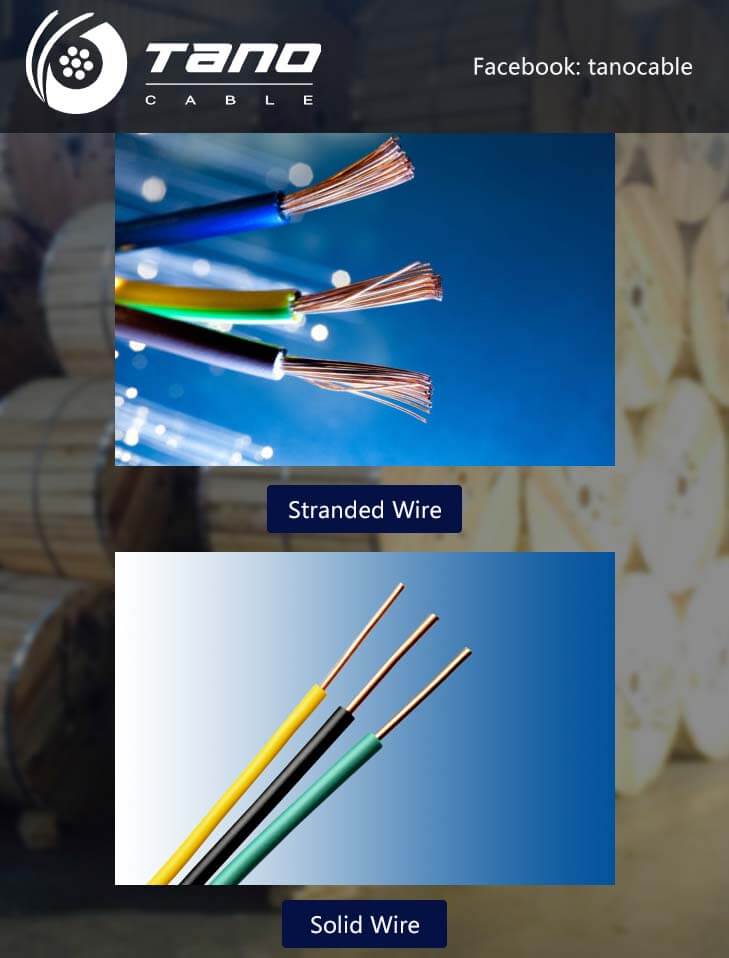24
Feb
Stranded wire vs. solid wire in electrical applications
Share:
Solid and stranded wires see frequent use in electrical equipment, such as cable assemblies and wire harnesses. Solid wires consist of a solid core, whereas stranded wire consists of several thinner wires twisted into a bundle. Each has distinct advantages, with the right choice for an application depending on the specific project details. Some of the factors that may influence the choice between stranded vs. solid wire include:

Learning more about the difference between the two types of wires will make it easier to determine the best choice for your needs. The following information should help to inform the selection process.
What is Stranded Wire?
These thin, bundled wires are compressed and insulated with non-conductive materials. Stranded wire is more flexible, making it ideal for connecting electronic components in cramped spaces or for twisting and bending to fit intricate geometries. Stranded wire is more flexible and malleable than solid wire, and it won’t split or sever. It is often used for indoor applications such as electronic devices, circuit boards, and speaker wires.
What is Solid Wire?
Solid metal core wire is a much heavier, thicker product than stranded wire. It is ideal for outdoor use where more durability and higher currents are required. This rugged, low-cost wire is resistant to weather, extreme environmental conditions, and frequent movement.
It is often used for carrying high currents throughout building infrastructure, vehicle controls, and various outdoor applications.
Stranded vs. Solid Wires: The Key Differences
You must first determine your application’s requirements. Then, choose the wire that most closely meets those needs.
Some key differences of stranded vs. solid copper wire include:
Electric current capacity. Solid wire is thicker, which means less surface area for dissipation. The thinner wires in stranded wire contain air gaps and greater surface area with the individual strands, translating to more dissipation. When choosing between solid or stranded wire for house wiring, the solid wire offers higher current capacity.
Routing. Stranded wires offer superior bendability and flexibility, making them easier to route around obstacles than solid wires.
Flexibility. Stranded wires are more flexible and can sustain more vibration and flexing without breaking. Solid wires may require more frequent replacement than stranded wires in applications with significant movement or vibrations.
Cost. The production costs of solid wire are much lower than stranded wire, which makes solid wire the more affordable choice.
Ease of manufacturing. The single-core nature of solid wire makes it much simpler to manufacture. Stranded wires require more complex manufacturing processes to twist the thinner wires together.
Distance. For longer runs, solid wires are the better choice because they feature less current dissipation. Stranded wire will perform well over shorter distances.
More information please visit https://www.tanocable.com/products . TANO CABLE will provide the best support for you!
- Amperage load
- Use case
- Costs
- Metal type
- Wire gauge

Learning more about the difference between the two types of wires will make it easier to determine the best choice for your needs. The following information should help to inform the selection process.
What is Stranded Wire?
These thin, bundled wires are compressed and insulated with non-conductive materials. Stranded wire is more flexible, making it ideal for connecting electronic components in cramped spaces or for twisting and bending to fit intricate geometries. Stranded wire is more flexible and malleable than solid wire, and it won’t split or sever. It is often used for indoor applications such as electronic devices, circuit boards, and speaker wires.
What is Solid Wire?
Solid metal core wire is a much heavier, thicker product than stranded wire. It is ideal for outdoor use where more durability and higher currents are required. This rugged, low-cost wire is resistant to weather, extreme environmental conditions, and frequent movement.
It is often used for carrying high currents throughout building infrastructure, vehicle controls, and various outdoor applications.
Stranded vs. Solid Wires: The Key Differences
You must first determine your application’s requirements. Then, choose the wire that most closely meets those needs.
Some key differences of stranded vs. solid copper wire include:
Electric current capacity. Solid wire is thicker, which means less surface area for dissipation. The thinner wires in stranded wire contain air gaps and greater surface area with the individual strands, translating to more dissipation. When choosing between solid or stranded wire for house wiring, the solid wire offers higher current capacity.
Routing. Stranded wires offer superior bendability and flexibility, making them easier to route around obstacles than solid wires.
Flexibility. Stranded wires are more flexible and can sustain more vibration and flexing without breaking. Solid wires may require more frequent replacement than stranded wires in applications with significant movement or vibrations.
Cost. The production costs of solid wire are much lower than stranded wire, which makes solid wire the more affordable choice.
Ease of manufacturing. The single-core nature of solid wire makes it much simpler to manufacture. Stranded wires require more complex manufacturing processes to twist the thinner wires together.
Distance. For longer runs, solid wires are the better choice because they feature less current dissipation. Stranded wire will perform well over shorter distances.
More information please visit https://www.tanocable.com/products . TANO CABLE will provide the best support for you!
Previous article:
Next article:




